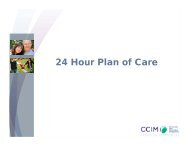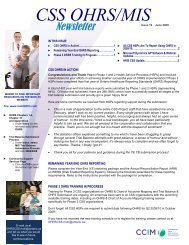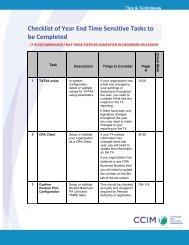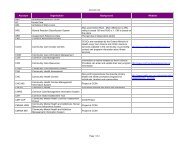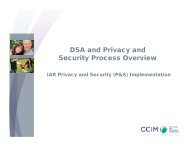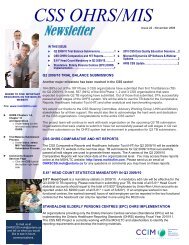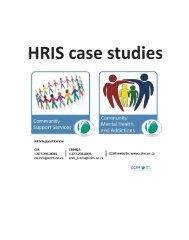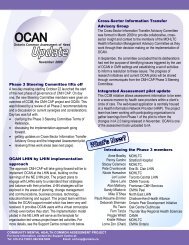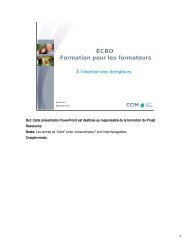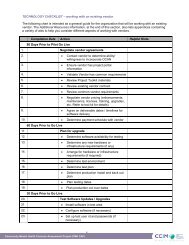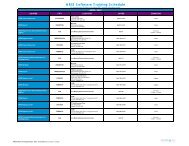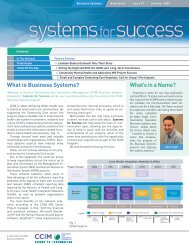RAI-MDS 2.0 Nutritional Care Resource Guide April 2011 - CCIM
RAI-MDS 2.0 Nutritional Care Resource Guide April 2011 - CCIM
RAI-MDS 2.0 Nutritional Care Resource Guide April 2011 - CCIM
- No tags were found...
You also want an ePaper? Increase the reach of your titles
YUMPU automatically turns print PDFs into web optimized ePapers that Google loves.
Strategies for Achieving <strong>RAI</strong>-<strong>MDS</strong> <strong>2.0</strong>Requirements in the Absence of the Servicesof a DietitianFor homes that have been unsuccessful in their recruiting efforts of a dietitian, the following strategies are for theirnursing and nutrition manager to implement in the absence of a dietitian. During the absence of a dietitian, thenutrition manager and registered staff will need to collaborate to ensure the nutritional needs of the residents are met.These strategies may be modified and/or integrated into the home’s policy and practice. Homes in this situationshould continue their efforts in recruiting a dietitian.For Nutrition Manager:1. Set up regular meeting with the unit charge nurse or the <strong>RAI</strong> Coordinator to review residents’ nutrition carestatus and update priority residents and care plans.2. Provide a list of high-risk nutrition care residents to nursing, including residents with renal, swallowing andenteral feeding.3. Depending on home’s policy, maintain ongoing nutritional care, coding, RAP documentation and care planningfor medium to low risk residents.4. Depending on the home’s policy, review dietitian referral form with the unit charge nurse.5. Collaborate with registered staff to re-assign nutrition risk level as required.6. Participate in the interdisciplinary team care conference or RAPs and care planning review.7. Inform the <strong>RAI</strong> Coordinator of vacation or leave of absence so that <strong>RAI</strong>-<strong>MDS</strong> <strong>2.0</strong> assignment will be re-assignedto registered staff.8. Maintain record of all dietitian referral forms.For Nursing:1. Assign all high-risk nutrition care residents, including high priority residents (e.g. renal, swallowing, enteralfeeding etc.) to registered staff to complete coding, RAPs and care planning.2. Explore with management the availability of external dietitian resources including:• Dietitian agency services• Hospital Dietitian• Home <strong>Care</strong> Dietitian3. Assess and determine the home’s ability to meet residents’ nutritional needs prior to accepting placement.Advise CCAC and the Ministry of the home’s decision to decline a resident admission related to complex dietaryneeds and lack of on-site dietitian services.4. Residents with renal needs: contact the renal centre dietitian to ensure the necessary nutritionalrecommendations are sent back to the home to be implemented by the attending physician.5. Residents on enteral feeding: ensure prior to admission/re-admission that the resident is stable and implementformulary as recommended by the home care or hospital dietitian.6. Residents with swallowing difficulties: communicate to physician when a change in diet order is required andplace a referral to a Speech Language Pathologist for assessment and recommendations.For Information: 416.327.7625 2ltchrai@ontario.ca2



